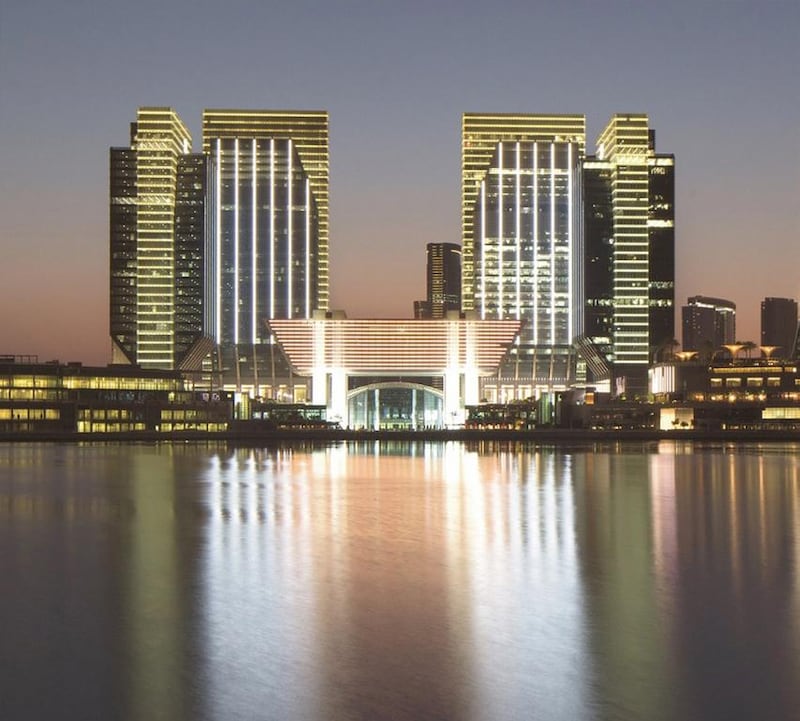Office rents in Dubai and Abu Dhabi softened in the first quarter of 2018 despite an uptick in demand activity, and are projected to continue the downward trend for the rest of this year, according to a report from real estate consultancy Knight Frank.
Average rents across Dubai fell by 4.3 per cent year-on-year during the quarter, with 'Grade A' offices (adjacent to the city centre, with rents on average than the rest) falling by a steeper 7.4 per cent, while average Grade A rents in Abu Dhabi fell by 8.2 per cent, Knight Frank’s first-quarter market update showed.
“After subdued market performance in 2017, landlords have conceded to lowering rents and offering appealing incentives, and as a result leasing rates have exhibited significant falls in the first quarter across all market sectors,” the report said.
The UAE’s property industry faced numerous headwinds in 2017, including low oil prices, a fight for affordability by budget-conscious residents and widespread corporate consolidation, which led to shrinking office and housing requirements and prompted landlords to lower rents, creating a ‘tenant’s market’.
Due to market conditions, landlords will keep having to work harder to attract and retain tenants for the rest of 2018, Knight Frank’s report said. In particular, landlords marketing ‘shell-and-core’ (non-fitted out) offices must be willing to provide capital expenditure incentives and consider active asset management and lease re-gears to retain tenants, it said.
“Although we have seen a strong start to the year, we envisage that market activity will begin to slow in the second quarter of 2018, with rents likely to remain under some pressure,” said Taimur Khan, senior analyst at Knight Frank.
The report highlighted stark differences between different office sub-segments across Dubai and Abu Dhabi. 'Prime' office rents (the top 5 per cent of all lettings in the market) in both emirates declined at a slower rate than for Grade A or lower-grade ‘citywide’ space, at -1.6 per cent year-on-year in Abu Dhabi and -1.4 per cent in Dubai. Meanwhile, citywide office rents in Dubai fell 6.2 per cent in the first quarter of 2018, and by 12.9 per cent in Abu Dhabi.
________________
Read more:
[ Dubai Land Department to enable fully-digitised real estate transactions ]
[ Abu Dhabi rental declines to slow in 2018, says Core Savills ]
[ Asteco expects 'moderate' dip in Abu Dhabi housing prices, rents in 2018 ]
________________
Similarly, vacancy rates in core prime assets remains as low as 1 per cent in Dubai’s DIFC Gate Village but rose on the edges of, and beyond, prime areas, the report added.
Despite ongoing rental declines, there were tentative signs of renewed activity in Abu Dhabi’s occupier market, as businesses took advantage of favourable market conditions. More than 50 per cent of demand in the quarter came from general trading companies, according to Knight Frank, followed by professional services, hospitality and other firms, such as education institutes, resulting in a “relatively stable” overall vacancy rate of 23 per cent.
“This demand pool represents a clear expansion from the demand pool witnessed in 2017 where enquiries were limited to only a select few sectors,” said Mr Khan. “Over the course of the first quarter we have also seen higher levels of demand for larger floor areas and a healthy level of demand for low to mid-sized office space [in the 100-500 square metre range].”
Dubai, meanwhile, saw “fragmented” market performance, with single-ownership assets continuing to outperform the market while strata-owned stock fared worse. Market-wide vacancy in Dubai in the quarter recorded a small uptick to 15 per cent, attributed to availability of new stock and corporate consolidation, the report said.
In Abu Dhabi, more than 195,000 square metres of office stock is scheduled to be delivered in 2018. However, Knight Frank said in reality only around 70,000 square metres would be delivered with the remainder likely to be pushed into 2019.






